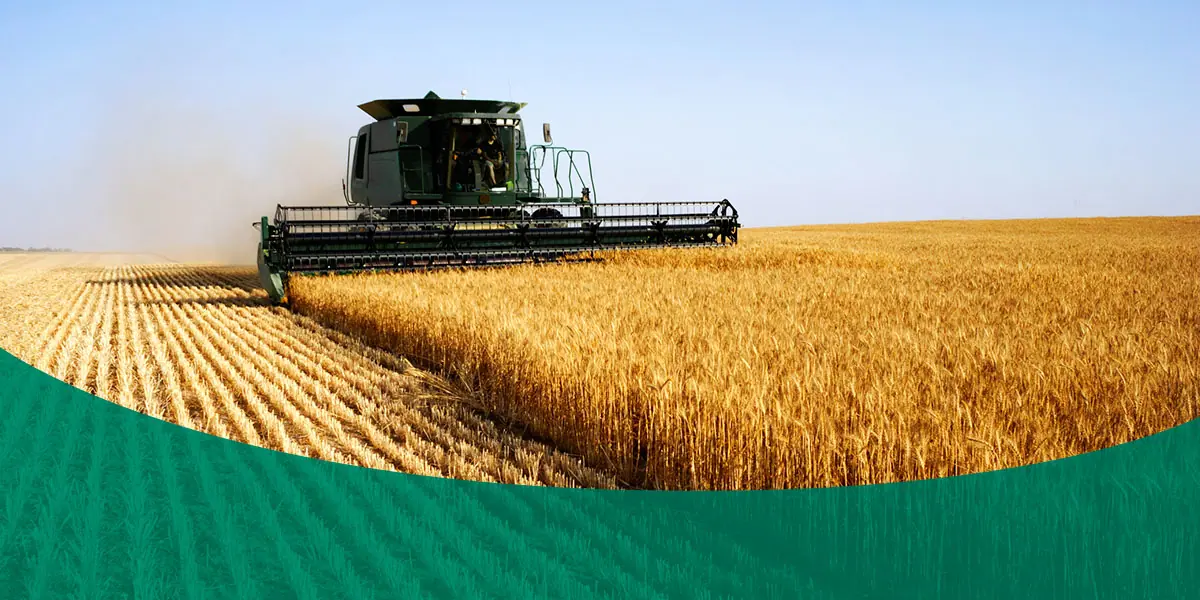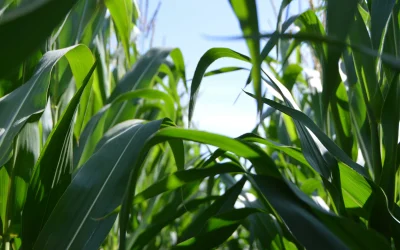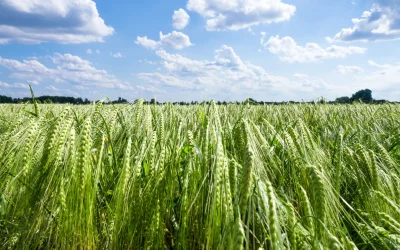Key Takeaways
- Healthy Soil = Higher Yield Potential
Regular soil testing, improved soil structure and a healthy microbiome are foundational to maximizing nutrient uptake and water efficiency—critical yield drivers. - Get the Easy Win
Biologicals and ag technologies like TerraFlow® can provide immediate benefits by supporting healthy root development and microbial activity, often in the first season of use. - Tech-Driven Decisions Lead to Efficiency
Precision ag tools help optimize input placement, monitor crop health and reduce waste—boosting yields while controlling costs. - Smart Water Use Protects Yield and Profit
Efficient irrigation, supported by tools like soil moisture probes and TerraFlow, improves root-zone moisture retention, reducing irrigation needs by up to 20% while increasing yields. - Seed Selection Sets the Ceiling
Choosing the right seed for your acres—based on yield goals, soil type and stress tolerance—can significantly influence your crop’s success and profitability. - Timing is Everything
Timely planting, nutrient application and pest control—especially during critical crop stages—can preserve yield potential by preventing stress-related losses. - Think Long-Term While Managing Today
Building soil organic matter, improving nutrient efficiency and reducing reliance on synthetic inputs positions your farm for year-over-year gains—not just seasonal wins. - UpTerra Helps You Do More with Less
Enhancing irrigation water with TerraFlow promotes better soil health and input ROI, helping you achieve higher-yielding crops while protecting your bottom line.
Many growers are walking a fine line in managing in-season production risks while also maintaining their profit margins as input costs continue to rise. Data from the U.S. Senate Committee on Agriculture, Nutrition and Forestry reports that net cash farm income for family farms growing crops was down sharply in 2024.1 Many factors contribute to this, including the rising cost of inputs, equipment and cash rent, dynamic market conditions and in-season production challenges.
You’d probably agree that increasing yields is a top priority for maximizing your farm’s profitability. But you may struggle with how to improve yields without sacrificing profitability. In this blog post, we’ll explore six ways you can boost crop yields without breaking the bank.

Source: United States Senate Committee on Agriculture, Nutrition, & Forestry1
- Start With the Soil
You’ve probably heard the saying that yield is built from the ground up. And it’s true. Your farm’s soil health directly impacts yield by influencing nutrient uptake, water movement, root health and more. Building soil health takes time and intention, but here are some simple steps you can take to get started.
- Conduct regular soil tests
-
- The Natural Resource Conservation Service (NRCS) recommends soil testing every three to five years for most farms2
- Monitor soil nutrient levels, pH and organic matter
- Take core soil samples in the fall of each year for the most accurate results
- Use best soil sampling practices and ensure you collect enough samples per field area for a representative composite3
- Consider biologicals
-
- Adding biologicals is a way to jumpstart the natural soil microorganisms that aid in nutrient cycling and healthy root development
- Soil-applied biologicals can be applied via traditional spray equipment or irrigation, eliminating the need for special equipment
- You can often achieve benefits from applying biologics during the first season of application
- Improve soil structure
-
- The pore spaces in your soil dictate how effectively plant roots can access oxygen, water and nutrients
- Improve soil structure by reducing compaction risks, planting cover crops with deep roots to support healthy root channels and building organic matter through reduced tillage or cover cropping
- Consider adding TerraFlow®, an irrigation water enhancement technology that improves water distribution in the soil for healthier roots, more biological activity and better soil structure

- Use Precision Ag Tools
Precision ag technologies are gaining more utility on the farm, and they’re also becoming more cost-effective for farmers to adopt. For example, the USDA Economic Research Service reports that more than half of mid-size U.S. family farms used autosteering systems on tractors, harvesters and other equipment in 2023.4 That’s up from single-digit adoption rates in the early 2000s.
Here are just a few ways farmers are using ag tech tools to gain efficiency:
- Optimizing fertilizer placement and rates based on productivity zones
- Streamlining workflows and labor management
- Collecting real-time data that aids in in-season management decisions
- Using aerial imagery to stay ahead of potential yield threats and monitor crop health
- Conserving water and optimizing irrigation schedules
- Monitoring yield trends to adjust management practices each season
If you’re new to ag technology, it’s best to start small by trying a new product or service on a limited number of acres. Not every new tool will have a fit on your farm, and you’ll want to prioritize those with clear benefits and positive ROI potential based on your needs.

Source: USDA Economic Research Service (ERS) using USDA, National Agricultural Statistics Service and ERS 2023 Agricultural Resource Management Survey (ARMS) data.4
- Optimize Water Use
Water use efficiency is critical for maintaining healthy crops and healthy profits. Irrigation costs are a major expense for many growers, especially in drought-prone regions of the western U.S. Finding ways to keep more moisture in the root zone benefits crop health and reduces your input costs.
Water management technologies, including soil moisture probes, pivot sensors and smart irrigation scheduling platforms, can help improve water use efficiency. Soil moisture probes provide real-time soil moisture readings to inform you when to turn the water on and off. This helps reduce overwatering while ensuring crops have sufficient moisture at key development stages. Similarly, pivot sensors gather data on soil moisture, plant health and environmental conditions to inform automated irrigation decisions. These types of technologies can eliminate the guesswork associated with irrigation scheduling.
UpTerra’s water-enhancing technology, TerraFlow, is a cost-effective solution for improving irrigation efficiency. With a simple installation into your existing irrigation system, TerraFlow enhances the way water moves across and into the soil profile, resulting in more even moisture distribution in the root zone. The enhanced TerraFlow water is retained in the root zone longer, reducing the amount of water required to maintain crop health. Farmers who’ve used TerraFlow have been able to cut irrigation amounts by nearly 20% while increasing corn silage yields by almost 10%.5
- Be Diligent With Seed Selection
Seed selection is one of the most important agronomic decisions you have to make each season. From an input standpoint, seed is one of your farm’s largest expenses, and it’s also the starting point for your farm’s yield potential.
While looking at local yield data can help you narrow down seed decisions, you’ll also want to consider your farm’s unique challenges. Some seed varieties are considered “defensive” and work well on tougher acres with variable soil types. More “offensive” seed products are bred to maximize yield in high-productivity soils and favorable environments. Other considerations include a product’s drought, pest and herbicide tolerances. Your local seed dealer can help guide you through the seed selection process to find the best products for every acre.
- Get the Timing Right
Timely management can make or break any crop yield. Understanding the key developmental stages of your crop can help you make more informed management decisions. Consider how timely planting, fertilization and crop protection applications can affect yield potential using these crop examples.
- The estimated yield loss per day of delayed planting in the Corn Belt varies from about 0.3% per day early in May to about 1% per day beginning about May 15. Relative grain yield potential decreases with delayed planting because of several factors, including a shorter growing season, greater insect and disease pressure and higher risk of hot, dry conditions during pollination.6
- The need for potassium rises dramatically in cotton when bolls set begins. It’s essential that potassium is available when the plant is setting fruit; 70 to 75% of the total yield comes from the first position bolls on the first seven or eight fruiting branches in cotton.7
- Protecting the flag leaf in wheat is the top priority from a disease management standpoint. The flag leaf is the primary driver of photosynthesis and is critical for maximum grain fill. The first leaf below the flag leaf and the flag leaf combined produce about 70 to 90 percent of the sugars that are used for grain fill.8 Therefore, prioritizing fungicide applications at flag leaf emergence can help maximize wheat’s yield potential.
- Make Small, Cumulative Changes
It’s easy to get caught up in season-to-season planning and lose sight of the long-term goal: consistent profitability and a lasting legacy. As you plan for each season, consider adopting practices that can set you up for both a seasonal win AND long-term success.
- Work towards building soil organic matter with reduced tillage, diversified crop rotations and biological amendments.
- Find ways to reduce physical inputs that can negatively impact soil health. TerraFlow can help by improving nutrient cycling and uptake, thereby reducing reliance on synthetic fertilizers.
- Strive for input efficiency by applying the right products at the right time to get the most out of every application. UpTerra-treated water supports nutrient mobilization and moisture retention in the soil, optimizing input return on investment season after season.
- Adopt ag technologies that can evolve with your operation over time, while continuing to add proven value.

Cumulative benefits achieved with consistent use of UpTerra technologies.
Cultivating Higher Yields and Long-Term Profitability
Farming today means navigating tight margins, volatile markets and unpredictable weather. But amidst these challenges, one thing remains clear: higher yields and stronger profitability go hand in hand when managed wisely. From improving soil structure and optimizing irrigation to selecting the right seed and investing in ag technology, each decision you make is a step toward a more resilient and productive operation.
At UpTerra, our mission is to help farmers like you grow more with less—more yield, more profit, and more long-term success—with fewer wasted resources and lower input costs. Whether it’s through efficient water management, improved nutrient uptake or better soil health, TerraFlow technology is designed to make every drop, every input and every acre count.
Ready to take your yields—and your profitability—to the next level?
Learn how UpTerra can help you get more from your water, your soil and your season. Visit upterra.co to get started.
References
1 United States Senate Committee on Agriculture, Nutrition, & Forestry. A False Positive: USDA’s Farm Income Projection. 2024.
2 Natural Resources Conservation Service. Soil Sampling: Small-Scale Solutions for Your Farm. 2009.
3 Ackerson JP. Purdue Extension. Soil Sampling Guidelines. 2018.
4 McFadden J. Lim K. USDA Economic Research Service. Precision Agriculture Use Increases With Farm Size and Varies Widely by Technology. 2024.
5 UpTerra. Corn: 19.9% Reduction in Applied Water. 2023.
6 Nielsen RL. Purdue University. The Planting Date Conundrum for Corn. 2024.
7 Roberson R. Farm Progress. Do Foliar Fungicides Pay on Cotton?. 2011.
8 Lollato R. Kansas State University Research and Extension. Wheat Growth and Development. 2018.




